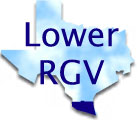

|

|

|

|

|

|

|

|

|

|
Roadway Equipment Coordination Equipment Package |
 |
Description: |
This equipment package coordinates field equipment that is distributed along the roadway by supporting communications directly between the field equipment. This includes coordination between remote sensors and field devices (e.g., Dynamic Message Signs) and coordination between the field devices themselves (e.g., coordination between traffic controllers that are controlling adjacent intersections.).
|
||||||||||||||||||||||||||||||||||||||||||||||||||||||||||||||
Included in: |
Brownsville MPO Field Equipment Cameron County International Bridge Field Equipment City of Brownsville Field Equipment City of Harlingen Field Equipment City of McAllen Field Equipment City of Pharr Field Equipment Hidalgo/Reynosa Bridge Field Equipment Pharr/Reynosa Bridge Field Equipment Private International Bridge Field Equipment TxDOT Pharr District DMS TxDOT Pharr District Flood Monitoring System TxDOT Pharr District HAR TxDOT Pharr District Lane Control Signals TxDOT Pharr District Traffic Signals |
||||||||||||||||||||||||||||||||||||||||||||||||||||||||||||||
Processes: |
|
||||||||||||||||||||||||||||||||||||||||||||||||||||||||||||||
User Service Requirements (fully or partially addressed): | |||||||||||||||||||||||||||||||||||||||||||||||||||||||||||||||
|
|||||||||||||||||||||||||||||||||||||||||||||||||||||||||||||||
| The detailed process and user service requirement traceability information on this page was extracted from the National ITS Architecture. Consult the National ITS Architecture web site for more information. | |||||||||||||||||||||||||||||||||||||||||||||||||||||||||||||||
 Web Spinner Technology.
Web Spinner Technology.